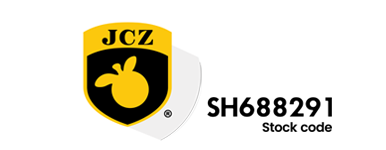In the realm of advanced manufacturing technologies, UV fiber lasers have emerged as a groundbreaking innovation that is redefining how industries approach cutting, engraving, and marking materials. Combining the advantages of ultraviolet light with the versatility of fiber lasers, these tools facilitate precision and efficiency, making them essential for modern production environments. This article discusses the technical workings of UV fiber lasers, their applications across diverse sectors, the myriad benefits they present, and the future prospects of this technology.
Understanding UV Fiber Lasers
UV fiber lasers operate by using a fiber optic cable as the medium of light transmission, which is then modulated by a laser beam produced by the gain medium. Unlike traditional laser systems, UV fiber lasers generate short wavelengths, typically around 355 nanometers, which fall into the ultraviolet spectrum. This unique wavelength allows for high-energy photons that can interact effectively with various materials, making UV fiber lasers particularly adept at marking and engraving surfaces without significant thermal effects.
The architectural design of fiber lasers provides several advantages, including a compact size, higher reliability, lower maintenance requirements, and the capability to operate in diverse conditions. This makes them highly adaptable to a multitude of manufacturing environments, from industrial to medical, electronics, and beyond.
Applications of UV Fiber Lasers
The versatility of UV fiber lasers is one of their most notable features. They find applications in various industries such as:
1. Electronics Manufacturing: UV fiber lasers are widely used for micro-marking and engraving on electronic components. Their precision is essential for applying identification codes and logos on devices, ensuring traceability without compromising the integrity of sensitive materials.
2. Medical Device Production: In the medical field, hygienic and precise manufacturing is paramount. UV fiber lasers are employed for marking surgical instruments and medical devices, enabling highly detailed annotations that meet regulatory standards without contaminating surfaces.
3. Aerospace and Automotive: The aerospace and automotive industries utilize UV fiber lasers for lightweight, durable marking of parts. This technology ensures that components can endure extreme conditions while retaining traceability through precise and readable markings.
4. Packaging: UV fiber lasers also play a significant role in packaging industries. They are utilized for reversible marking on food and beverage packaging, providing consumers with vital information without affecting the materials’ integrity.
5. Jewelry and Decorative Items: In the realm of luxury goods, UV fiber lasers offer intricate engraving capabilities that can enhance the beauty and perceived value of jewelry and decorative items.
Benefits of Using UV Fiber Lasers
Adopting UV fiber laser technology provides a multitude of benefits:
– Precision and Quality: The focused nature of UV lasers allows manufacturers to achieve intricate designs and markings that are not possible with traditional laser technologies.
– Reduced Thermal Damage: The low heat focus of UV fiber lasers minimizes the risk of thermal damage to materials, preserving their quality and structure.
– Environmentally Friendly: Many UV fiber lasers use solid-state components that are more energy-efficient than other systems. Additionally, they produce less waste and harmful byproducts, making them environmentally friendly.
– Higher Material Compatibility: UV fiber lasers can mark or engrave a wider range of materials, including metals, plastics, glass, and ceramics, expanding their usability across different sectors.
– Cost-Efficiency: Once installed, UV fiber lasers typically incur lower operation and maintenance costs than traditional laser systems, enhancing their economic viability for manufacturers.
Future Prospects
As industries continue to evolve, the demand for faster, more precise, and efficient manufacturing processes will only grow. UV fiber lasers are poised to meet these demands as ongoing innovations in laser technology lead to improved designs and capabilities. The integration of AI and machine learning with laser systems promises to optimize manufacturing processes even further, enhancing precision and reducing downtime.
In conclusion, UV fiber lasers represent a significant advancement in manufacturing technology. Their ability to provide precision marking and engraving across multiple industries positions them as a critical tool for companies looking to improve their production capabilities. As the technology continues to develop, it will undoubtedly open new avenues for innovation and application, solidifying its place at the forefront of modern manufacturing solutions.
由用户投稿整理稿件发布,不代表本站观点及立场,仅供交流学习之用,如涉及版权等问题,请随时联系我们(yangmei@bjjcz.com),我们将在第一时间给予处理。


![[20w fiber laser marking machine]Exploring the Amazing Capabilities and Applications of a 20W Fiber Laser Marking Machine in Modern Manufacturing and Crafting](https://www.ezcadchina.com/wp-content/uploads/2024/06/Enhanced-Metal-Fiber-Laser-Cutting-Using-MCS-F-Series-Laser-Cutting-Controllers_1-500x383.jpg)
![[engraving software free download]Discover Amazing Engraving Software Free Download Options: A Comprehensive Guide to Choose the Right Tool for Your Creative Projects](https://www.ezcadchina.com/wp-content/uploads/2024/05/Application-of-large-size-intelligent-continuous-laser-processing-system-500x383.jpg)
![[lmcv4 fiber]Exploring the Innovative Applications and Benefits of LMCV4 Fiber in Advanced Textile Engineering and Sustainable Fashion Industry](https://www.ezcadchina.com/wp-content/uploads/2024/07/Is-Mopa-laser-better-than-fiber-laser-500x383.jpg)
